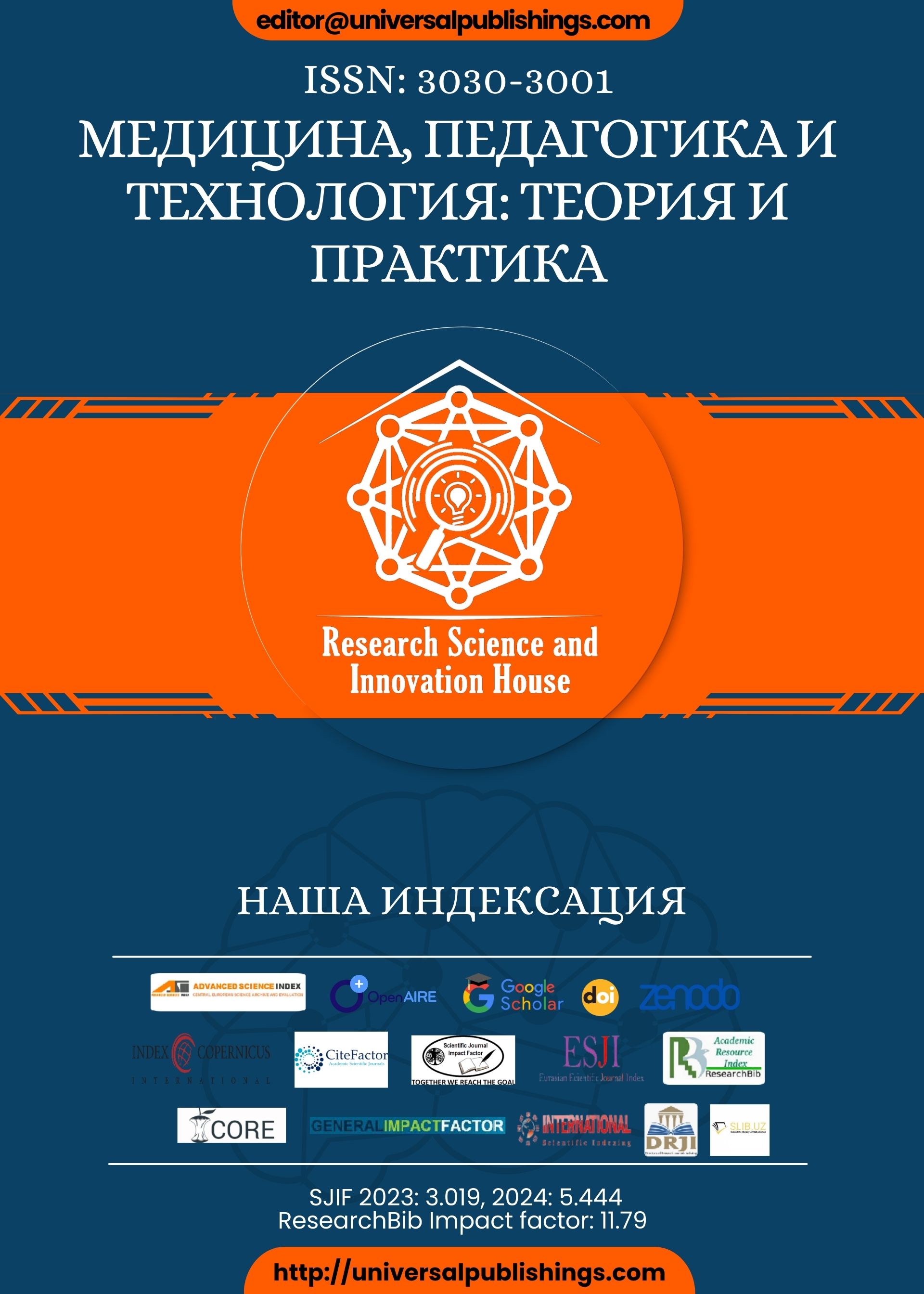Abstract
In recent years, the Uzbek language has undergone significant transformations in its development and usage in various fields, including science and academia. With the increasing globalization of knowledge and the need for effective communication among scholars worldwide, the usage of linguistic terms in Uzbek language has become a priority. However, the adoption of Western linguistic concepts and terminology has posed challenges in finding equivalent terms in the Uzbek language. As a result, scholars in Uzbekistan often employ alternative versions of linguistic terms in scientific articles, which may have both positive and negative implications. This article aims to explore the use of alternative versions of linguistic terms in Uzbek language in scientific articles and provide a critical analysis of the benefits and drawbacks associated with this practice.
References
1. Ibragimov Javlon (2018) Analysis of Practical Implementation of Language Opportunities as a Social Need.
2. Steven Andrew Miles (2015) Uzbekistan and Kazakhstan: migration, language politics and their relations with Russia.
3. Yangibaeva Nazira (2019) Regarding Morphological and Orthographic Problems in Uzbek linguistics in the 1920s of the 20th century.
4. AWEJ for Translation & Literary Studies, Rokiah Awang, Ghada Salman (2017) Translation and Arabicization Methods of English Scientific and Technical Terms into Arabic.
5. Norkhodjaeva Khurshida (2016) Thematic Groups of Process Defining Terms in the Uzbek Language.
6. Маджидова, Р. У., Мухитдинова, Х. С., & Оманов, П. Х. Роль Лингвострановедческих Мультимедийных Средств В Преподавании Узбекского Языка Как Иностранного. ‘‘Ўзбекистон Олимлари Ва Ёшларининг Инновацион Илмий-Амалий Тадқиқотлари’’7-Қисм, 149.
7. Маджидова, Р. У. (2019). Антропоцентризм и аксиологическая картина мира. Наука, техника и образование, (6 (59)), 67-71.
8. Majidova, R. U. (2023). Language As A Communication Tool: Understanding Its Functions And Implications. " Germany" Modern Scientific Research: Achievements, Innovations And Development Prospects, 9(1).
9. Маджидова, Р. (2018). Речевое Поведение Человека В Социолингвистической И Психолингвистической Трактовках. Farg'ona davlat universiteti, (1), 20-20.
10. Urishevna, M. R. (2019). Representation of the linguistic world picture through a human factor. Religación. Revista de Ciencias Sociales y Humanidades, 4(15), 234-240.
11. Mamatov, G. B. R. (2024). Implementation Of The Education System Of European Countries. Innovations in Technology and Science Education, 3(19), 135-139.
12. Bozorova, G. M., Mamatov, R. R., Adaxamjonov, A. A., & Jaloldinov, M. S. (2024). The Use Of Information Technology In The Formation Of Professional Competence Of Foreign Language Teachers. Science and innovation, 3(Special Issue 19), 352-354.
13. Mukhammadalievna, B. G. (2023). Theoretical Views On Proverb In German And Uzbek. International journal of advanced research in education, technology and management, 2(4).
14. Rasulova, A. M., & Xusanova, M. (2022). ’Rifat Axmadjonovna Poetik Nutqda Sinonimlardan Foydalanish Mahorati.
15. 20. Ahmadjonovna, K. M. (2024, February). Xorijiy Tilni Oson Va Qiziqarli O ‘Rganish To ‘G ‘Risida. In Formation and Development of Pedagogical Creativity: International Scientific-Practical Conference (Belgium) (Vol. 4, pp. 20-23).
16. Xusanova, M. (2023). Somatik Kodlar Tadqiqiga Doir. Farg'ona davlat universiteti, (1), 163-163.
17. Rasulova, A. (2023). Farida Afro ‘Z She’riy Asarlarida Omonimlarning Roli. Theoretical aspects in the formation of pedagogical sciences, 2(9), 116-120.
18. Axmadjonovna, X. M. R., & Alijonovna, A. G. (2023). Til Estetikasiga Doir. Ta'lim Va Rivojlanish Tahlili Onlayn Ilmiy Jurnali, 3(3), 262-265.
19. Rasulova, A. M., & Xusanova, M. R. A. (2022). Poetik Nutqda Sinonimlardan Foydalanish Mahorati. Oriental renaissance: Innovative, educational, natural and social sciences, 2(10-2), 807-811.
20. Xusanova, M. R. A. (2021). The Use Of Expressive Phonetic Means In Farida Afrozs Works. Theoretical & Applied Science Учредители: Теоретическая и прикладная наука,(9), 642-645.

